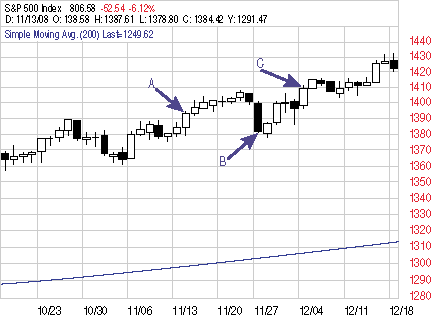TRADING SYSTEMS
Rolling The Double 7s
Three Rules, One Easy Way To Trade Etfs
Here’s a short-term trading strategy to trade exchange traded funds.
A famous trader once remarked that he could publish the secrets to his winning trading strategy in the newspapers and no one would follow them. The key, this famous trader explained, was consistency and discipline.
In our opinion, when it comes to trading and trading strategies, one of the things that makes consistency easier and discipline a bit less daunting is simplicity. With few exceptions, all the trading strategies we have developed over the years have had simplicity as their hallmarks.
What we’ve developed in this latest trading strategy is short-term trading at its simplest. Instead of stocks, we focus on the smaller universe of market index exchange-traded funds (Etfs). We also created the system as long-only — no need to worry about borrowing shares of Etfs. And last but not least, we limited the strategy to three simple rules.
The Double 7s
Before we tell you those rules, first understand a bit about this trading strategy, which we call Double 7s. We tested this strategy on both the Standard & Poor’s 500 (Spx) and the Nasdaq 100 (Ndx) from January 1995 through April 2008. The results over that time period for the S&P 500 were +1,133 points, with nearly 80% of the trades closing profitably. In the Nasdaq 100, the results were similarly impressive. From January 1995 through April 2008, the Double 7s strategy in the Nasdaq 100 yielded 2,822 points, with 79.84% of the trades closing in the green.

FIGURE 1: Double 7’s Strategy Trade — SPX. The S&P 500 made a new seven-day high at point A. After moving higher for another six days, the S&P 500 topped and began to pull back, creating a new, seven-day low at point B. We take a long position at the close. Five days later, the S&P 500 made a new, seven-day high at point C. We exit our long position on the close.
We also tested the Double 7s strategy on international Etfs such as the Fxi, representing the Chinese Ftse/Xinhua Index, and the Ewz, representing the Brazilian stock market. Again, the simulated trading results spoke for themselves. In the Fxi, we saw 73% correct trades since the Etfs’ inception. In the Ewz, the percent of correct trades was more than 80%.
These were long-only trades over a period that included a boom, a bust, a low-volatility recovery, and then another bust. Note also the high win rate. This is a characteristic of our trading systems, one that traders who have used our strategies have come to appreciate. Trading systems with high win rates tend to make the trading experience much more enjoyable for the trader. This is because the experience of trading is, by and large, a positive one since traders are making money on the majority of trades.
This also speaks to the issues of consistency and discipline we’ve mentioned. When the day-in, day-out experience of trading is largely positive, the discipline of following the rules and making your trades is easier to abide by. Over time, even the most profitable trading systems can be hard to adhere to if the trader feels like every trade boils down to a 50/50 crapshoot — or worse.